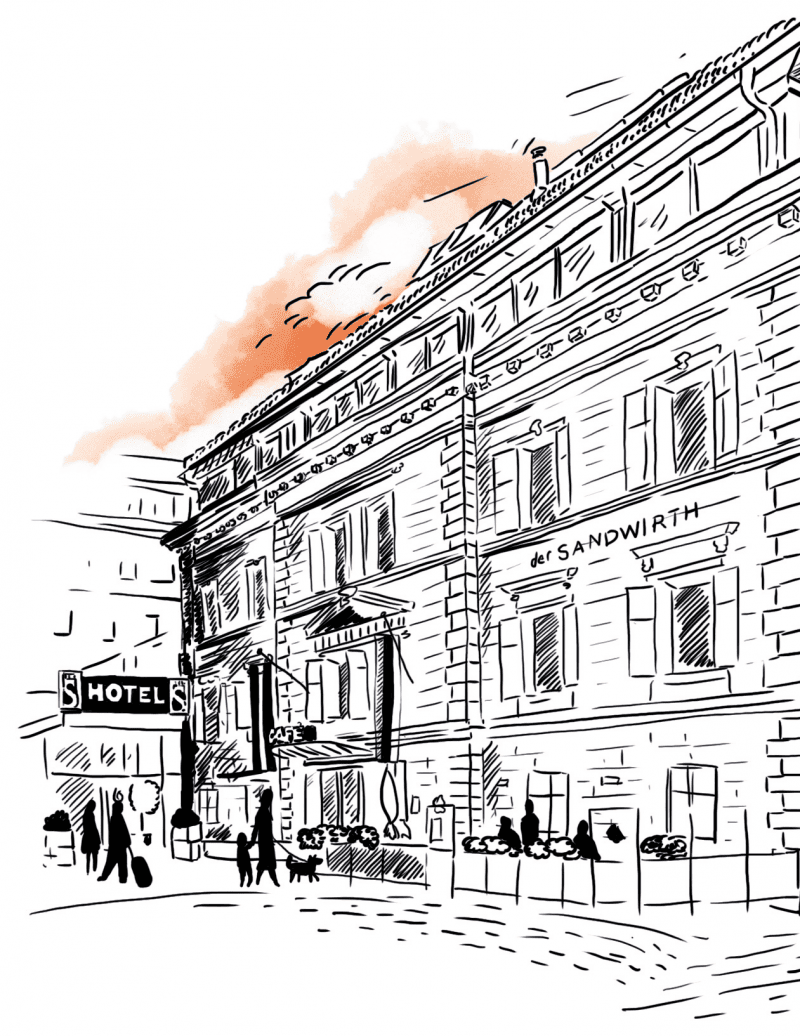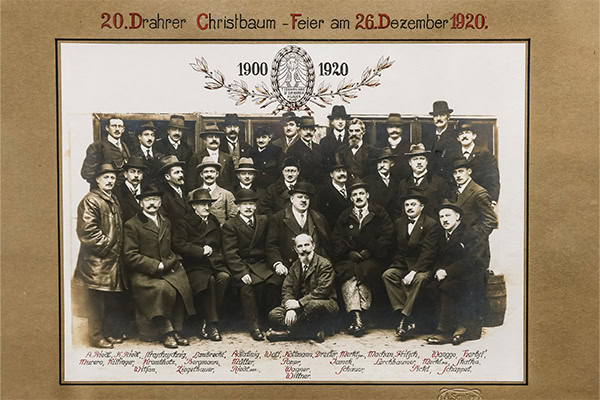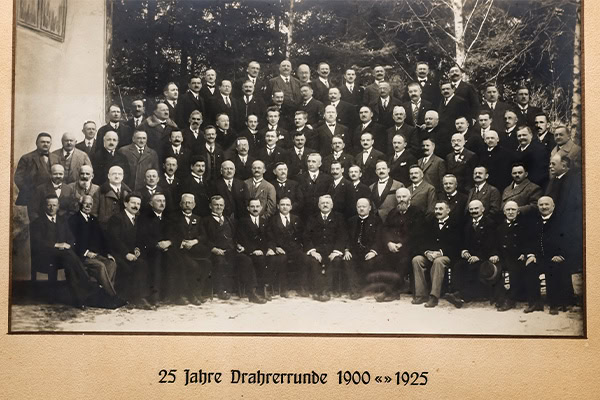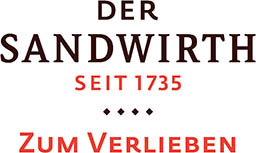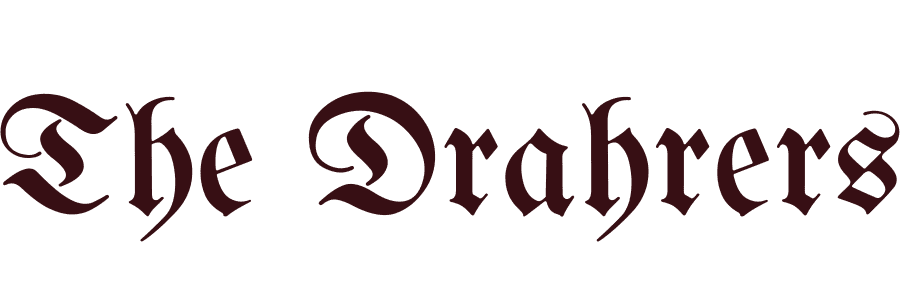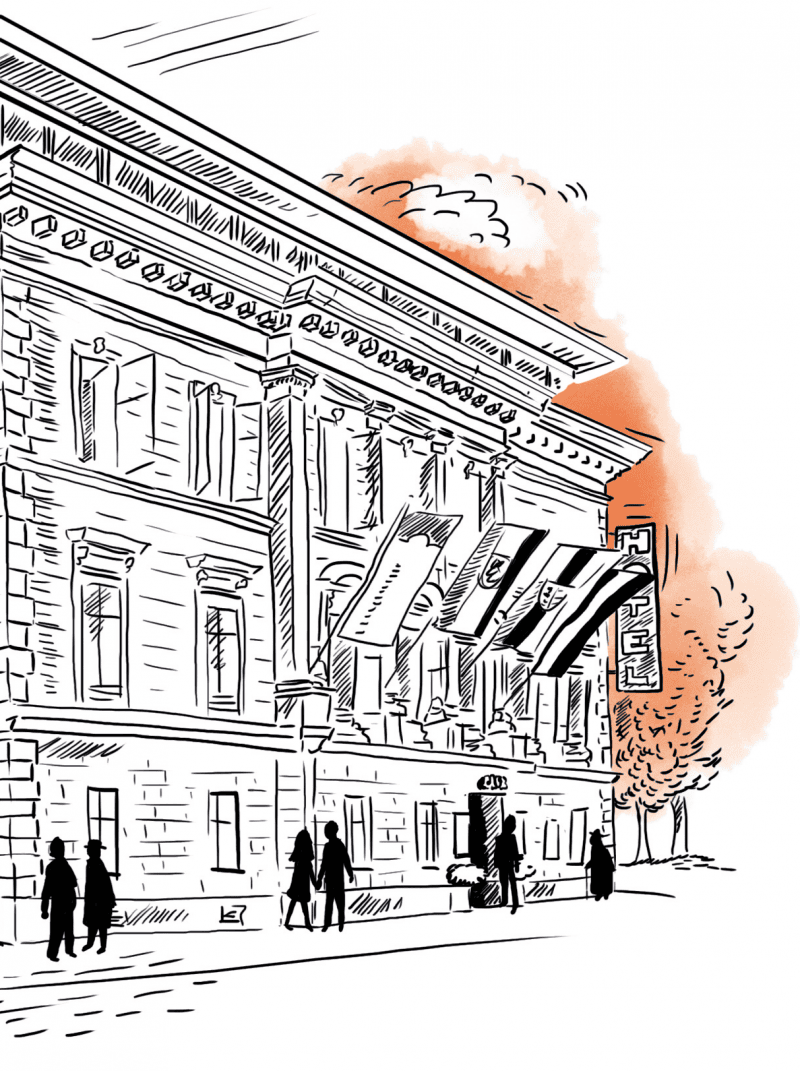
Tradition and charity at the Sandwirth
![]()
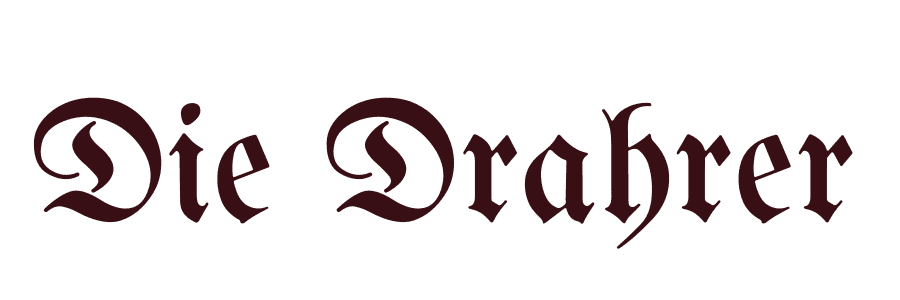
The Drahrers represent a very special chapter in our Sandwirth history, spanning from 1900 to 1954.The so-called ‘Drahrer-Runde’ shaped social life in Klagenfurt for decades and was not just a regulars’ round table, but a charitable organisation that helped countless children from poor backgrounds.
They met regularly at the so-called Drahrer-Tisch – a regulars’ table in the Sandwirth. To collect donations for a good cause, the members hammered their signatures into the table with small nails. Each nail represented a monetary donation. The intricately nailed signatures on the table still bear witness to this time of giving and sharing.
The historic table still stands in the restaurant and offers a very special place for up to 14 people.
The new Drahrer table – a tradition revived!
The owner family Kanduth has always honoured this historic regulars’ table and is now continuing the Drahrer’s charitable tradition as part of the annual Sandwirth Kirchtag.
In order to collect donations for ‘Kärntner in Not, a new Drahrer table was created and rebuilt. Everyone is now invited to immortalise themselves on the Drahrer table under the motto ‘nail and donate’!
As in the old days, the nailing of the entire name can take place over a longer period of time and takes place in a convivial setting at the annual Sandwirth Kirchtag. This allows each supporter to determine the timing of their financial commitment.
With a minimum donation of € 100, anyone can secure a place on the table top and immortalize their name, initials or company name. For each nail, €10 goes to “Kärntner in Not”
In this way, the spirit of the Drahrers lives on and combines past and present in a unique way.
Next opportunity to nail and donate:
Sandwirth Kirchtag
19th & 20th September 2025
The history of the Drahrers
In December 1899, Joseph and Franziska Jamek acquired the Hotel Sandwirth for 100,000 guilders and quickly turned it into a central meeting place in Klagenfurt. The front garden with music pavilion by the old city wall was renovated and the halls of the Sandwirth opened, which could hold up to 1000 people and became a popular venue for parties, balls and concerts.
In 1900, the well-known ‘Drahrer-Runde’ was founded in the Sandwirth, which collected money for charitable purposes.
The members‘ signatures were nailed out with copper and silver nails at the regulars’ table. Each nail represented a monetary donation in the time of need during the war (World War I). From 1916, this table had its permanent place in the Sandwirth.
The association had 80 to 100 members. Men and women from all walks of life – from street sweepers to mayors. They sat together several times a day at a large regulars’ table in the Sandwirth to recover from the day’s work, discuss worries and exchange experiences.
Economic issues were also discussed here, information was exchanged and remedies were found for many a need. There was a club treasury, also known as the ‘Kindelkasse’, which was filled by donations, club fines and card rounds.
The management team consisted of the ‘Ober-Drahrer’, the ‘Unter-Drahrer’ and the ‘Drahrer-Schreiber’. There was also a ‘treasurer’ who was responsible for the finances.
The term ‘Drahrer’ means ‘night owl’ and comes from the word ‘drahen’, which means ‘to go out in the evening’ (H.C. Artmann: Österreichisch-Deutsch, 1955).
The club also had to fight against the reputation that all they did was gamble and drink. The name ‘Drahrer’ was therefore a horror for some wives.
Charity and solidarity
During the First World War, the Drahrers collected money for the war effort and later for children in need. They also made donations to help victims of bad weather. They organised social evenings and concerts and put together a music band called the ‘Drahrer Fünfklang’. The proceeds from ticket sales went to children from poor backgrounds.
For example, there is a request from the Drahrer-Runde to the Klagenfurt City Council dated 5 July 1919, requesting permission to hold social evenings in the ‘Grossgasthofe Sandwirt’ from 1 August to 15 September 1919 so that the proceeds could be used to benefit children.
Every year, 12 boys and 12 girls were given new clothes and presents on St. Stephen’s Day – a tradition of warmth and charity.
Special occasions and meetings were recorded in a separate Drahrer book.
After the Second World War, despite all efforts, it was not possible to revive the Drahrer round table and so the last Drahrer meeting at the Drahrer table took place on 24 March 1954.
As a result, the „Drahrer Stammtisch“ became a family table for the Jamek family, seating 8 people. When the Kanduth family bought the Sandwirth in 2000, it was very important to them that the historic table top remained with the house so that a piece of Klagenfurt’s history could continue to be told and relived in the future.
